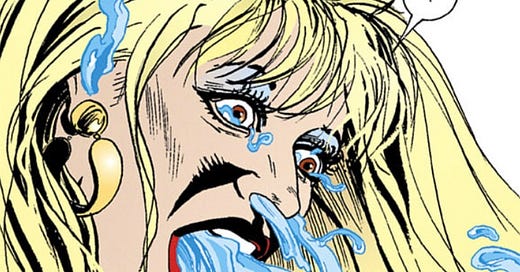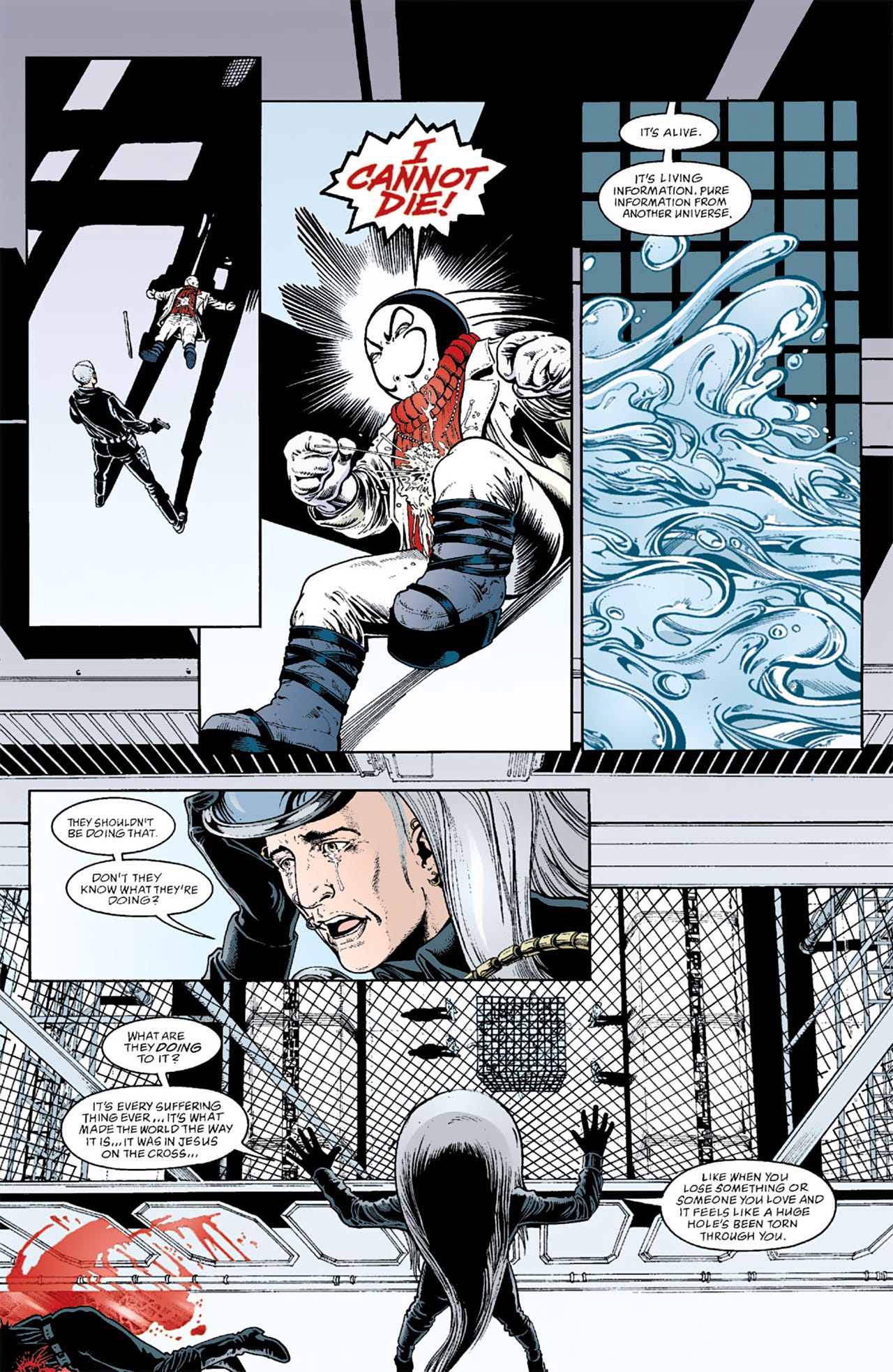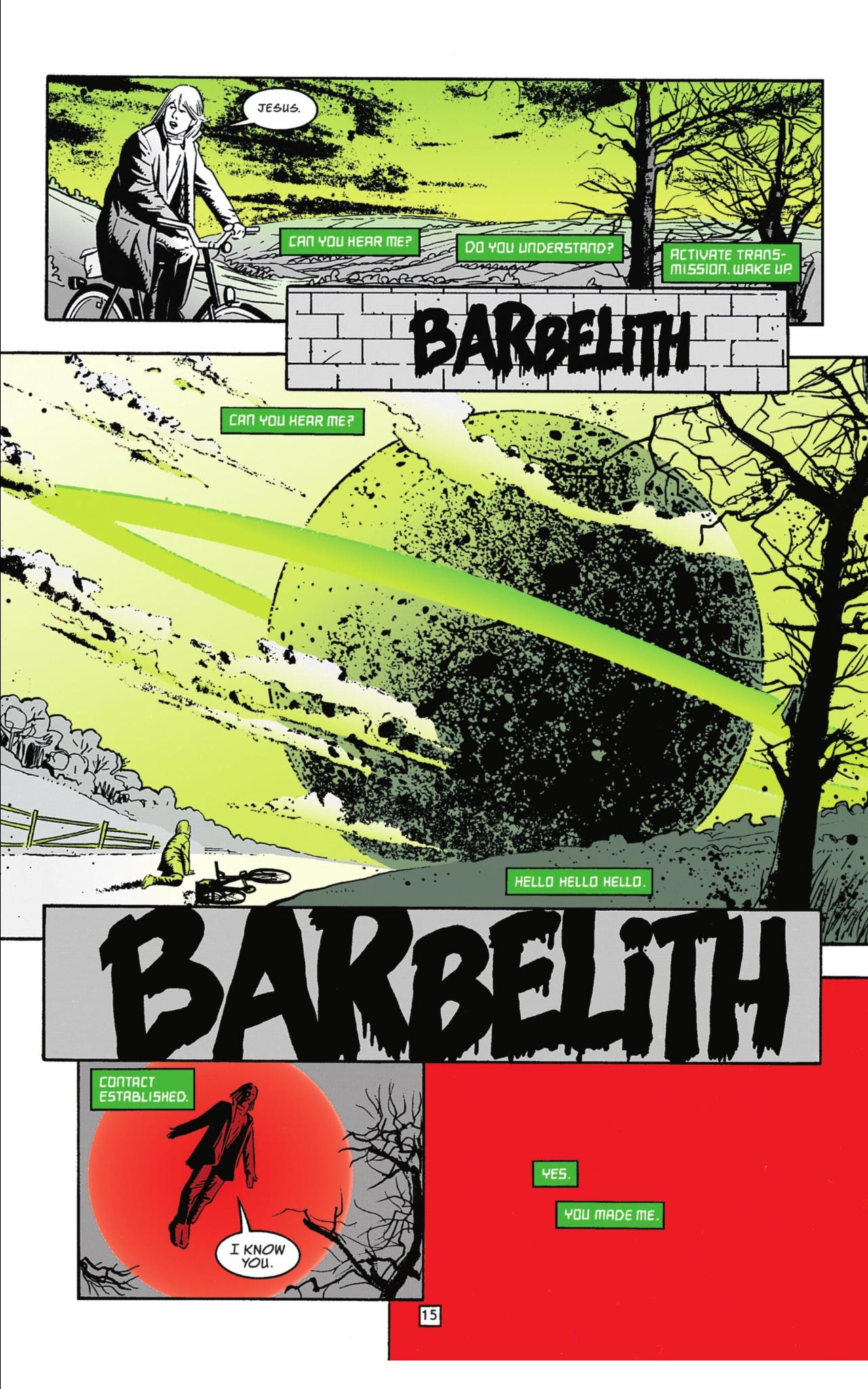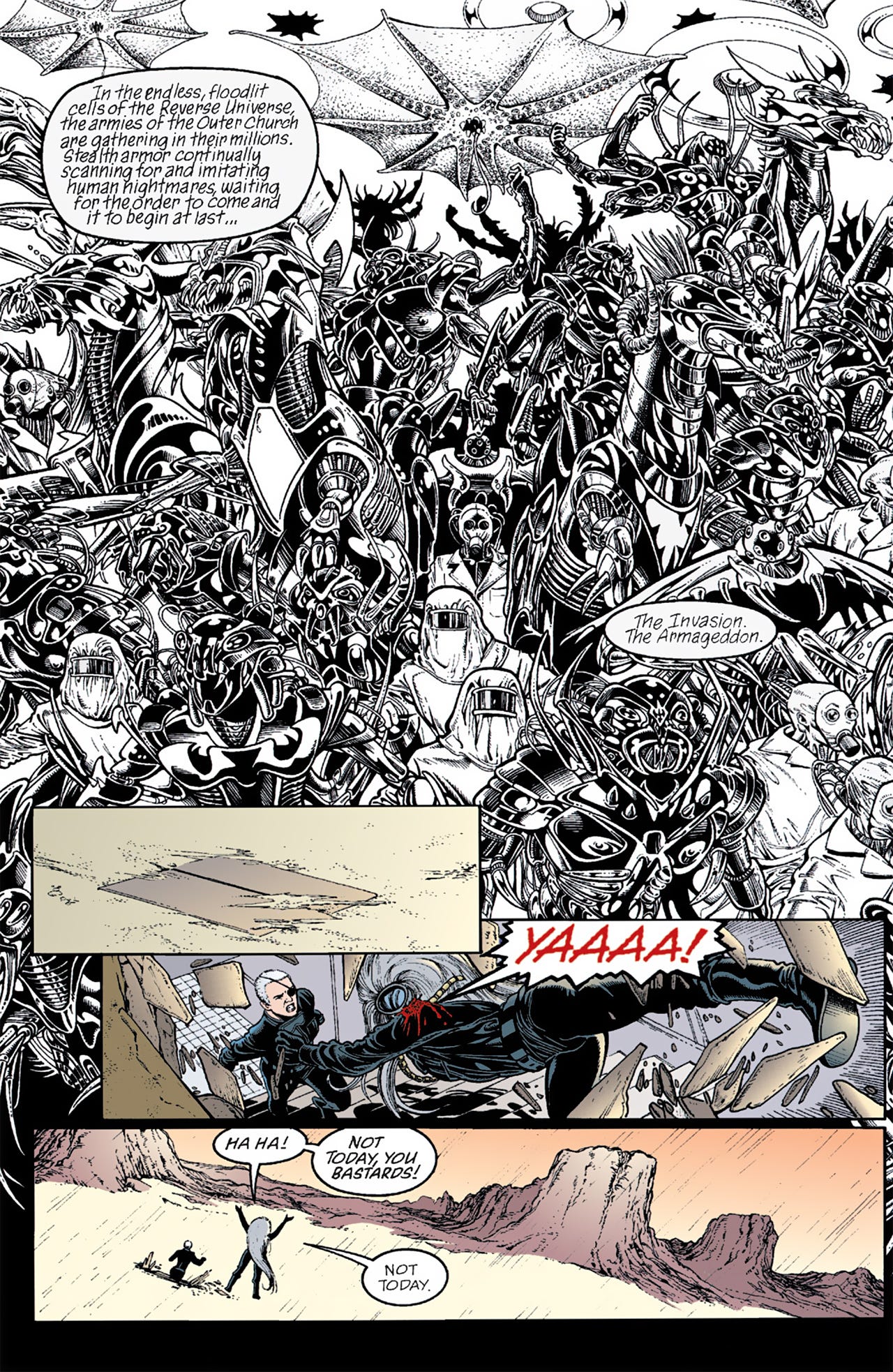The Invisibles Vol. 2: Neoplatonism, Sethian Gnosticism, and Imprisoning God
How’s that for a title?
I’m going to level with you here. I am less interested in doing an issue-by-issue breakdown of the plot of the second volume of The Invisibles than I am with examining the religious and philosophical traditions and principles that author Grant Morrison pulls from to tell their story. Keep in mind that Morrison intends for this series to be a magical hypersigil to affect actual change in the world, so it is more than just a story to them. With that said, it’s still an excellent story with fantastic artwork from Phil Jimenez and Chris Weston for the entirety of this volume.
The basic plot of the second volume of The Invisibles is this. Minor spoilers ahead. Our cadre of King Mob, Ragged Robin, Lord Fanny, Boy, and Jack Frost have traveled to America following their nearly fatal encounter with the Outer Church in the previous volume. They have linked up with wealthy financier Mason Lang and the sole survivor of another Invisibles cadre named Jolly Roger (a kickass eyepatch wearing lesbian super spy). Their first mission is to raid a United States military base that is being co-run with the Outer Church that they believe is storing a secret AIDS vaccine. While conducting this operation they also discover that the Outer Church is keeping whatever was discovered in Roswell, New Mexico back in 1947. We’ll come back to this later in a big way.
The second arc has several interwoven storylines. One deals with the revelation that Ragged Robin is actually a time traveler from the future who is attempting to ensure that Mason Lang’s employee Takashi successfully invents a time machine. Time paradox, baby! King Mob takes Ragged Robin to the Invisible College (the headquarters for the Invisibles) which exists in a different dimension. We will definitely be going back to that later. Jack Frost and Lord Fanny go on a mission to locate the Hand of Glory (a severed/mummified hand with supernatural powers). King Mob projects his consciousness back in time to the 1920s to learn how to properly use said Hand of Glory. Ultimately Boy steals the Hand and is revealed to be a brainwashed double agent working for the Outer Church except actually she’s a triple agent who is being deprogrammed by a different Invisibles cadre whom she believes is the Outer Church. Pretty straightforward.
The third arc of the volume revolves around a substance referred to as Magic Mirror. I’ll refrain from spoiling much about this arc as it is a doozy, but trust that it propels the story forward to set up the third and final volume.
Now that we have a baseline for the plot of the first two volumes of The Invisibles and quite a few concepts and themes, let’s examine some of the sources Morrison is pulling from and how they’re combining a few different philosophical and religious traditions to synthesize their own unique current.
Arguably the most important facet of the universe in The Invisibles is the substance referred to as Magic Mirror. It frequently emanates from characters like Jack Frost and Lord Fanny when they are engaging in powerful acts of sorcery (typically being vomited up in the process).
It tends to be drawn as a bluish-silver mercurial substance almost like the globules inside a lava lamp. In the second volume it’s revealed that the thing that was captured in Roswell in 1947 is an entity composed of this substance. So what is it? Plotinus, the third century Greek philosopher and founder of Neoplatonism, would call this substance The One. Plotinus was an idealist monist. He believed that everything was resolvable to one fundamental substance or reality, and everything emanates from that reality. The One is an ineffable substance that is the highest level of reality. Modern Westerners would call this God. Because literally all substance and reality can be broken down to The One, then that means humanity itself is a microcosm of The One. Therefore for humanity to achieve salvation or enlightenment, it needs to engage in an ontological mystic process to merge with The One and become indistinguishable from it. In other words, humanity’s salvation is to become one with God. Now let’s apply this to The Invisibles. When Jack Frost and Lord Fanny engage in mystical practices and produce Magic Mirror, they are briefly achieving a kind of enlightenment by realizing that their inherent nature is being part of The One and tapping into that power.
Morrison isn’t satisfied with leaving it there. Morrison’s infamous Kathmandu experience that I covered in last week’s post clearly colored their idea of what the nature of reality is, so Magic Mirror/The One/God might be the ultimate substance of the divine but there can be physical representations of it. The Roswell incident is basically portrayed as one of these physical representations of God (that looks strikingly like what Morrison described during their Kathmandu experience) that created the universe we inhabit accidentally falling into its own creation and becoming imprisoned. This is implied to have been connected to the use of nuclear weapons. The Outer Church and its demonic adherents (known as Archons) seize on the opportunity to stream into our reality and imprison this piece of their creator and bend it to their evil whims. What a bunch of jerks.
Speaking of the Archons, where did Morrison come up with these nasty figures? They along with several other concepts and characters can be traced back to Sethian Gnosticism or Sethianism. It’s a little more difficult to nail down when Sethianism developed, but it seems to have become prevalent in the third century (and become a competing philosophy with Neoplatonism). A lot of their beliefs can be found in the Apocryphon of John. Much like Neoplatonism, Sethianists believe in an ineffable God. Emanating from God are beings called aeons, and the first of these is called Barbelo.
Since God is ineffable, Barbelo serves as kind of an intermediary between God and humanity. Barbelo (often depicted as being androgynous or having multiple genders) assists in communicating aspects of the Divine to humanity. Throughout The Invisibles, Jack Frost sees the word “Barbelith” scrawled on various surfaces. Barbelith is the name of the being that communicates important information to Jack in the same way that Morrison claims information was conveyed to them in the Kathmandu incident. It seems clear to me that Barbelith is based on Barbelo and that Morrison views their own experience through a Sethianist lens. Barbelith is ultimately revealed to be a sentient satellite that exists to help shepherd humanity out of our subjective reality to the true reality of the Magic Mirror.
So how did reality get to be in this state in the first place? If the true nature of reality is that of the Magic Mirror, how did our material world come into being? The Sethian Gnostics (and Morrison) have an answer for that: Yaldabaoth (also known as the demiurge). This being escapes from the spiritual world with a stolen piece of divine power. It uses this power to create a material imitation of the spiritual world and rules over it with its spawn of demonic followers known as Archons. It should now be clear where the Outer Church was derived. The ruler of the Outer Church, referred to as Rex Mundi but never actually seen in a physical form, is Morrison’s version of the demiurge. His legion of followers are even called Archons in an obvious reference to Sethian Gnosticism. The imprisoned God from the Roswell incident? That’s the piece of the divine stolen by the demiurge.
There are other references and allusions to religious and philosophical traditions peppered throughout The Invisibles, but these are the ones most necessary to understanding the basis for the story Morrison is telling. Armed with that knowledge, we can now progress to the third and final volume of The Invisibles. But that will have to wait until next week.









